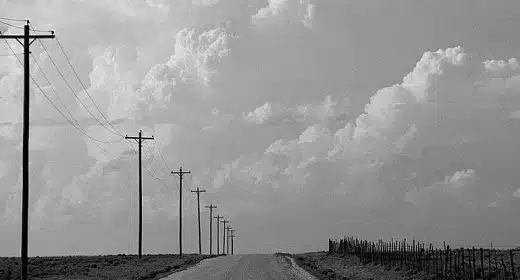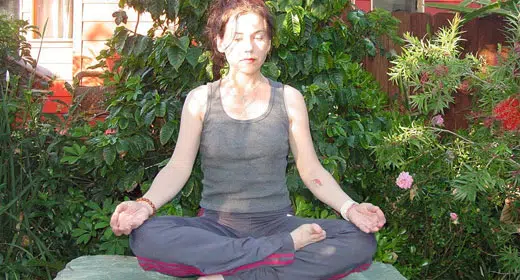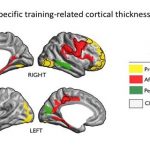By DAVID AMSDEN: A guru named Amma has drawn 32 million people into her embrace – spreading a message of love, compassion and overpriced merchandise.
 They make the journey every year, thousands of people heading up an unmarked, unpaved road into the feral hills outside San Ramon, a suburb some 30 miles east of San Francisco. Their destination is the tranquil and sprawling grounds of the M.A. Center, an ashram named after Mata Amritanandamayi, a 58-year-old spiritual guru from southern India. Known to her devotees as Amma, an honorific nickname meaning “Mother,” she is most famously referred to as the “hugging saint” because of her trademark blessing: a big, rapturous hug that her admirers describe as a transformative event – an infusion of pure, unconditional love that works on you like an elixir, cleansing the soul and bringing about a higher state of consciousness. Wherever Amma goes, people wait for hours in order to kneel before her and be embraced, and they are waiting on the morning in early June when I first arrive: blissed-out clusters congregating around the ashram’s temple, everyone basking in a collective mood that is as seductive as it is unnerving.
They make the journey every year, thousands of people heading up an unmarked, unpaved road into the feral hills outside San Ramon, a suburb some 30 miles east of San Francisco. Their destination is the tranquil and sprawling grounds of the M.A. Center, an ashram named after Mata Amritanandamayi, a 58-year-old spiritual guru from southern India. Known to her devotees as Amma, an honorific nickname meaning “Mother,” she is most famously referred to as the “hugging saint” because of her trademark blessing: a big, rapturous hug that her admirers describe as a transformative event – an infusion of pure, unconditional love that works on you like an elixir, cleansing the soul and bringing about a higher state of consciousness. Wherever Amma goes, people wait for hours in order to kneel before her and be embraced, and they are waiting on the morning in early June when I first arrive: blissed-out clusters congregating around the ashram’s temple, everyone basking in a collective mood that is as seductive as it is unnerving.
Inside Amrita Hall, as the modest A-frame structure is called, Amma is surrounded by a dense, undulating throng. Clad in a billowing white sari, her rotund figure is perched atop her dais, a cushy throne draped in garlands and strewn with rose petals. A sly, benevolent smile spreads across her face as she pulls one person after another to her bosom. This is what she does nearly every day, breaking for only a few hours in the afternoons, and going until three, four, five in the morning. Her stamina is a point of reverence among her “children,” as devotees refer to themselves, more than a few of whom are sitting on the temple’s open floor in the lotus position, watching the proceedings projected on a massive screen hanging from the ceiling, tears streaming down their faces.
Amma devotes much of the year to touring the world in order to hold everyone from migrant workers to celebrities to Western yoga obsessives in her arms, and she is here on the second stop of her annual, 10-city tour of North America, a zigzagging seven-week sojourn across the continent that begins in Seattle and ends in Toronto, during the course of which she will dispense somewhere in the ballpark of 60,000 hugs, adding to the 32 million already under her belt. She attracts a diverse crowd, Amma does. Wandering the temple, I see aging hippies happily petrified in late-Sixties nostalgia, earthy suburban yuppies, square-jawed businessmen, macrobiotic hipsters, plenty of toddlers and teenagers, and the smattering of Indian immigrants who are on hand wherever Amma sets up camp. There are many who compare the environment of Amma’s tours to that once fostered by the Grateful Dead or Phish: a parallel reality where such positive vibes prevail that you never want to leave. In fact, some people do not leave, finding the Amma experience so intoxicating they travel with her from city to city, from country to country.
“For me, in the beginning, it was more about the social aspect of Amma, just meeting like-minded people,” says Gabriele Cook, an extravagantly tattooed 29-year-old whom I meet at the entrance. A former biotech researcher, Cook quit her job three years ago and has been with Amma on and off ever since. She has followed Amma through Europe and spent two extended stays at Amritapuri, Amma’s ashram in the southern Indian state of Kerala, which is where she lives when not touring and where many of her most rapt followers set up permanent residence. “It’s a pretty intense place, especially for a woman,” says Cook. “You have to stay covered all day, and it’s a hundred degrees, so it’s nice to see her in the West,” she adds with a laugh, “where I can have my arms exposed.” Cook plans to follow Amma to Los Angeles before catching up with the tour in Washington, D.C., New York and Boston. “Now, the whole thing is about me trying to become a better person,” she says, though later on she will joke, in a way that lets me know she isn’t quite joking, that she may have also been spending so much time around Amma for other reasons: “You know, so I don’t have to make a decision about what to do with my life.”
Amma is unusual among Indian gurus in that she is, to put it in Western terms, completely self-made. Gurumayi, for example – featured prominently in Elizabeth Gilbert’s Eat, Pray, Love – the only other living guru who approaches Amma’s level of global recognition, was appointed to her position by her own guru, after years of study and dedication. But Amma never had a guru. Her devotees believe she is the rare being who has achieved full enlightenment on her own, a divine soul in a human body. As evidence of this, they tell you the stories all of Amma’s followers know by heart: about how as a young girl growing up in a small Kerala fishing village she had an abnormally compassionate nature, giving her own food to more needy strangers and consoling the sick; about how her parents, conservative Hindus, didn’t know what to make of her, and as Amma came of age they hoped to arrange for her to be married; about how Amma rejected this, angering her relatives to such an extent that one tried to poison her for bringing shame upon the family; about how Amma lived, and continued to spend most of her time outside, alone, meditating in a small temple she built on the property; about how people began hearing of this mysterious young girl and made pilgrimages to see her, and when they did, she opened her arms to them and pulled them close; about how Amma once sucked the pus out of the contagious wound of a leper; about how people began calling her Amma, it was just a natural instinct; and about how today Amma’s own mother, now a believer, along with the rest of her family, calls her Mother.
But Amma, like many who find success without being born into it, can trace her current prominence not merely to her natural charisma but also to her savvy at harnessing it on a large scale. Her ashram in India, for instance, built on the land where she grew up, was once little more than a few huts; today it has evolved into a kind of city unto itself, with soaring high-rises, some 5,000 permanent and semipermanent residents, and up to 15,000 visitors on a busy day. A university and a hospital exist in her name. She has used her prominence to start a network of charities, called Embracing the World, which focuses on providing food, housing, education and medical services to the impoverished. According to Amma’s organization, her charities bring in an average of $20 million in donations annually – however, it’s difficult to say just how much Amma’s group is worth. Evidence of her material gains can be seen in the impressive real-estate portfolio Amma has amassed over the years. The M.A. Center in San Ramon, founded in 1989, is her oldest outpost in the U.S.; more recently she acquired a $7.8 million mansion in Maryland, once owned by the Shriver family, to serve as her D.C.–area ashram, as well as properties outside Chicago and Boston, not to mention those scattered throughout Europe.
The tours double as fundraisers. At San Ramon, I can take only a few steps in any direction before running into a donation box, and outside the temple a number of vendors are doing brisk business selling clothes, coffee and “Amba Juice” smoothies. Inside, meanwhile, a large portion of the temple has been turned into a kind of bazaar specializing in all things Amma: T-shirts, hoodies, books, DVDs, magnets, key chains, essential oils, body washes, mantra counters. There is jewelry Amma has blessed ranging from silver bracelets costing $800 to a silver crown for $5,000. One of the most sought-after objects for sale is the Amma doll: a stuffed, handcrafted replica of Amma whose design seems inspired by the Cabbage Patch Kids. It comes in small, medium and large – $45, $90 and $180, respectively – and the idea is that it provides a kind of cosmic hotline to Amma when not in her presence. “Sometimes, I need a hug from her, and that same feeling of all-accepting love and softness is there,” a nameless devotee says of the dolls on the Amma Shop website. “It is as if she is my little piece of Mother.” Inside the temple, a number of people take to clutching their Amma dolls while staring at Amma, as if trying to double the dose of enlightenment, and seeing them it is impossible not to be reminded of how the line where devotion blurs into obsession, where faith morphs into fanaticism, can become so thin and porous that you can cross it without ever knowing it.
When I first started traveling with Amma, I thought it would be, like, six months,” a young woman tells me on my second day at the ashram. “That was six years ago.” Indeed, I spend three days at the site, a sleepdeprived blur during which time takes on malleable properties. While waiting for my own hug, I wash dishes and serve food, something all attendees are encouraged to do in order to understand the value of putting others before yourself. Then, after spending countless hours on the periphery, I decide that it’s time to enter Amma’s arms, to experience the Experience. Whereas the prevailing mood on the grounds is casual, a kind of collective hang, there is a palpable shift in energy as I get to the front of the line. Aside from those waiting for hugs, there are many others clamoring just to be closer to Amma, pushing forward with the ferocity of concertgoers trying to reach the edge of the stage. Aside from these fervent admirers, there are about a hundred people who have just received a hug, and who, as part of official post-hug protocol, are now seated in a semicircle around Amma’s dais, digesting the sensation. And finally there is the team working to prepare people for their hugs, some taking those in line by their shoulders and positioning them on their knees, while others make sure everyone removes their glasses, while still others sit wrapping Hershey’s Kisses in rose petals, which Amma hands out after every hug. Two people volunteer for the job known as “stargazer,” a role in which you sit at Amma’s feet and stare at her raptly. This is one of the most prized jobs on the tour.
These workers, many of them in their twenties, all wear the green plastic bracelets indicating they are official members of Amma’s staff, a force numbering 275 for the North American tour. These are coveted spots. People will tour with Amma on their own for years in the hopes that their dedication will earn them a staff spot the following year. (I meet one staff member who has just graduated from Cornell Medical School and is preparing for her residency come fall, another who paid his way playing online poker.) The “staff” label, however, is somewhat misleading to someone with a traditionally capitalist perspective, in that Amma’s staff is made up not merely of those willing to volunteer their time but also of those willing to pay to volunteer their time. This year’s cost to be a staff member is around $2,000, not including airfare to Seattle, where the tour began.
Her hugs are referred to as darshan, a Sanskrit term roughly meaning “visions of the divine,” and as gratitude for this vision it is customary to bring Amma a gift before your hug. People are coming to her with everything from coconuts to candy bars to handmade crafts, and for those who forgot to bring something, a table is set up at the start of the line where gifts for Amma are for sale: bouquets of flowers ranging from $5 to $20, a Toblerone bar for $5. (One staff member, I notice, has the job of collecting the bouquets in a basket and then running them back to the table, where they are resold throughout the day.) Before my hug, a plump guy in his forties with greasy brown hair shows up with a package of pecan cookies for Amma. She opens it with the zeal of a small child, and as she places a cookie in her mouth, two of her staff members rush in, cupping their hands under her mouth to ensure she doesn’t dribble any crumbs into the hair of the man, whose face is now buried in her chest. As Amma holds him, she hands what is now a Blessed Cookie out into the crowd, and I watch as it is broken into minuscule pieces – crumbs, really – which are savored by those surrounding her.
Eventually, it’s my turn. The chaos around Amma is unnerving, a chaos she seems immune to, but as she pulls me into her arms something happens: All goes silent and peaceful, like closing the door to a party, and I wonder if this sudden jolt, from chaos to calm, is at least part of the hug’s appeal. At one point Amma breaks from her embrace and stares into my eyes, and then pulls me in again, tighter, this time whispering something in my ear that I can’t quite understand. Mamma Mamma Mamma. The thing people say about great politicians, about how they provide you with the sense, however illusory, that you are all that matters – Amma has that. I feel better than when I entered her arms, there’s no denying that much, yet like coming down from a high, this euphoria fades quickly, especially once I rejoin those in the post-hug pool around Amma.
“I’m telling you, man, she’s like Jesus, but on Earth,” whispers the young man next to me, a guy I will get to know over the next few days, and who will ask, repeatedly, if I can help him find work since he’s spent all his money traveling with Amma. “I’m in a really great place right now,” he adds, “and I owe it all to Amma.”

















































